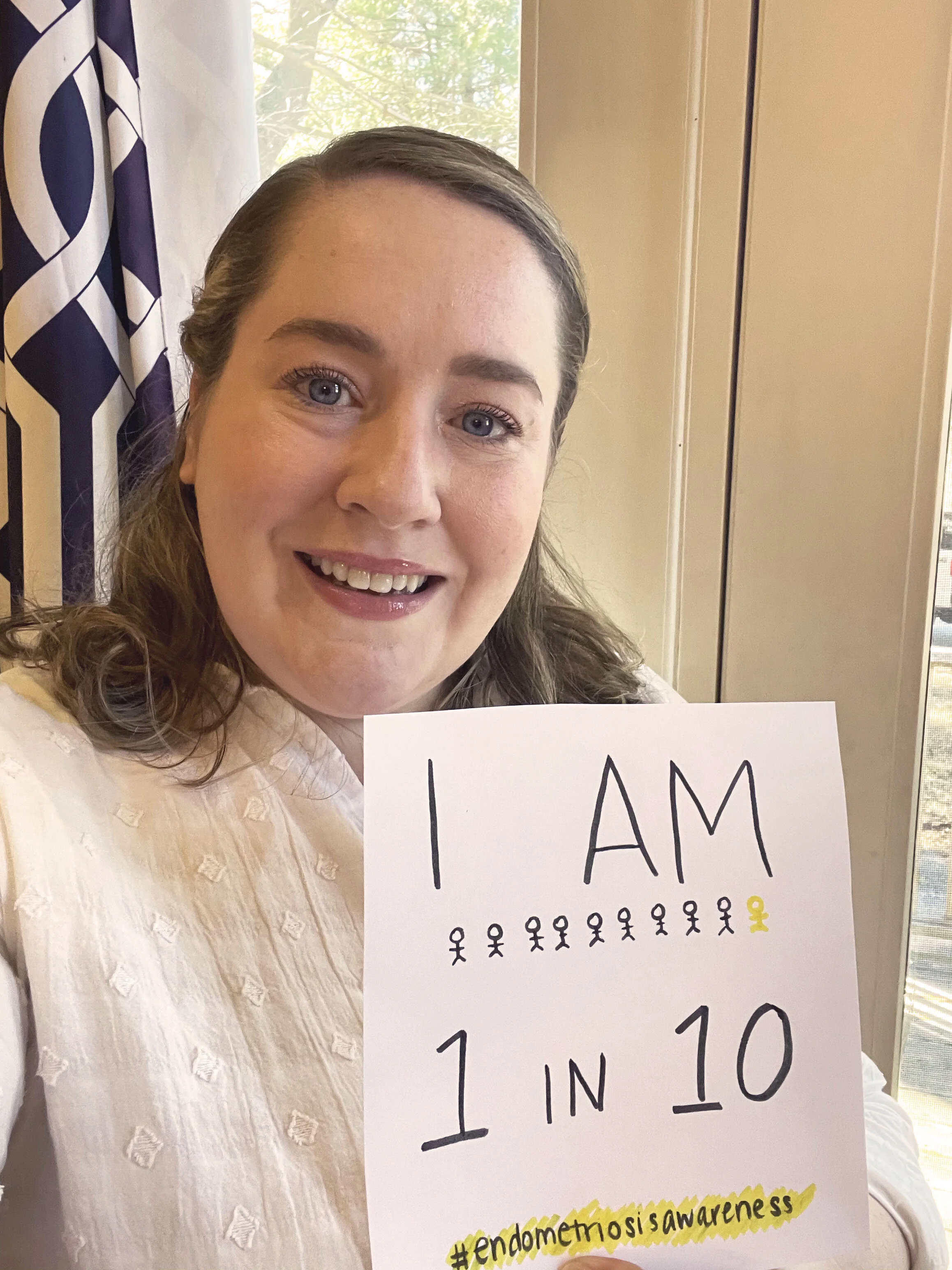endo warrior wednesday: endometriosis facts
In honor of Endometriosis Awareness Month, I set aside each Wednesday in March to devote to a topic that has touched my life for so many years. I will share my story and journey with endometriosis later on but today, I thought I’d take a moment to talk about what endo is, what it’s not, and where the world of medicine stands when it comes to this disease.
Endometriosis is a chronic, inflammatory condition that occurs when hormonally responsive endometrial tissue implants outside of the uterus and results in chronic pain and infertility. Most commonly these adhesions are found in the abdominal cavity but has also be documented in cardiac tissue, lungs, and brain (1).
In the general population, the prevalence of endometriosis is thought to be 6-10% of females of reproductive age. In women with documented infertility, the prevalence is 35-50%. The mean time from presentation to diagnosis, for women living in the U.S, is 11.7 years (1).
Let’s let that sink in for a moment. It can take nearly 12 years, on average, for women to be properly diagnosed with a disorder that is known to cause debilitating pain.
Positive risk factors for endometriosis include(1,2):
Early menarche (onset of menstruation before the age of 11)
Short cycles (less than 27 days)
Heavy cycles
Higher parity (number of pregnancy carried to gestational age)
Duration of lactation
First degree relative with endometriosis
Endometriosis is positively associated with(1):
Autoimmune disease, such has fibromyalgia, rheumatoid arthritis, and hypothyroidism
Atopic disease, such as allergies, asthma, and eczema
While endometriosis was first described in 1860, there is still no consensus on what causes it . Four prevalent theories have been described but none have been proven (2).
Retrograde Menstruation Theory (Sampson’s Theory): This theory describes endometriosis implants as the result of menstrual blood traveling backwards through the fallopian tubes and into the abdominal cavity (2).
Coelomic Metaplasia (Meyer’s Theory): This theory relies on the fact that endometrial cells and the cells of the abdominal wall share a common ancestor, coelomic epithelium. According to this theory, the cells of the abdominal wall undergo transformation from peritoneal cells to endometrial cells due to inflammation (2).
Lymphatic/Hematologic Spread (Halban’s Theory): Similar to Sampson’s theory, this theory describes the transportation of endometrial cells though the lymphatic and vascular system. The cells travel throughout the body and implant(2).
Induction Theory: Similar to Meyer’s Theory, induction theory supposes that other tissues undergo transformation to endometrial cells due to the presence of hormonal, immunological, and inflammatory markers that are introduced into the abdominal cavity when endometrial cells degrade (2).
The classic presenting symptom of endometriosis is chronic pelvic pain not otherwise explained but women with endometriosis may also experience painful and irregular periods, excessive bleeding during periods, spotting between periods, painful intercourse, spotting after intercourse, diarrhea, constipation, pain with bowel movements, pain with urination, blood in the urine, pain at sites of adhesions, nausea, fatigue, bloating, ovarian cysts, and infertility (1,2). And to top it all off, women with endometriosis are at a greater risk for ovarian cancer than women without it (2).
In addition to the physical symptoms experienced, endometriosis can have a negative effect on a woman’s life in that it may take a toll on interpersonal relationships, mental health and well-being, and her career (1).
Endometriosis is often misdiagnosed and is believed to be largely under diagnosed due to a lack of understanding of the disease and the limited available diagnostic tests (1,2).
The definitive diagnosis of endometriosis can only be made by histological sample of extra-uterine adhesions. Samples are obtained by laparoscopy - a minimally invasive procedure by which surgical instruments are inserted through the abdominal wall. However, in the presence of ovarian cysts, known as endometriomas, has a high predictive value and can be seen on ultrasound(2). A thorough history, exam, and review of symptoms may also aid in diagnosis.
Endometriosis can be staged, after laparoscopic examination, from mild to severe. However, the staging is not predictive of the patient’s experience of symptoms. For example, a women with severe disease may present with infertility but no other symptoms while a women with mild disease may present with severe pain and heavy periods. Staging can be usefully to predict the likelyhood of infertility, however the evidence to support the predictive value is limited (2).
The mainstays of therapy are hormonal contraception, short term use of Gonadotropin-releasing hormone agonist, and non-steroidal anti-inflammatory drugs (NSAIDs), such as ibuprofen. The jury is still out on how effective these treatments are for the management of symptoms and they have no proven benefit on infertility. These treatments aren’t curative. Symptoms most often recur after stopping(1).
For women who fail drug therapy, laser laparoscopy is the next line therapy and aims to remove extra-uterine adhesions. While the surgical treatment can be effective, as many as 55% of women who undergo it require additional treatment after 7 years (2).
Women who do not wish to preserve their fertility may elect to undergo a therapeutic hysterectomy with bilateral oophorectomy (removal of the uterus and both ovaries). Up to 15% of women who undergo this invasive procedure experience recurrence of symptoms due to persistent disease outside of the pelvic cavity (2).
In summary, endometriosis is a chronic inflammatory disorder that occurs in approximately 10% of women of reproductive age. It can lead to infertility. Endometriosis is challenging to diagnosis. It is even more challenging to treat and there is no cure at present.
If you or someone you know is suffering from endometriosis or what may be endometriosis, I encourage you to seek help.
If you don’t know where to start or you simply want more information, going to www.endometriosis.org
Check out my other endometriosis posts here!
References:
Guidice LC, Kao LC. Endometriosis. Lancet 2004; 364: 1789-99
American College of Obstetricians and Gynecologists: Management of Endometriosis. ACOG practice bulletin no. 114. 2010. American College of Obstetricians and Gynecologists Washington, DC





